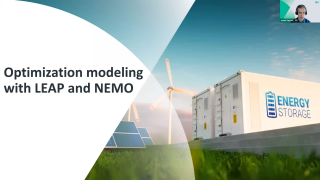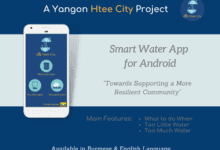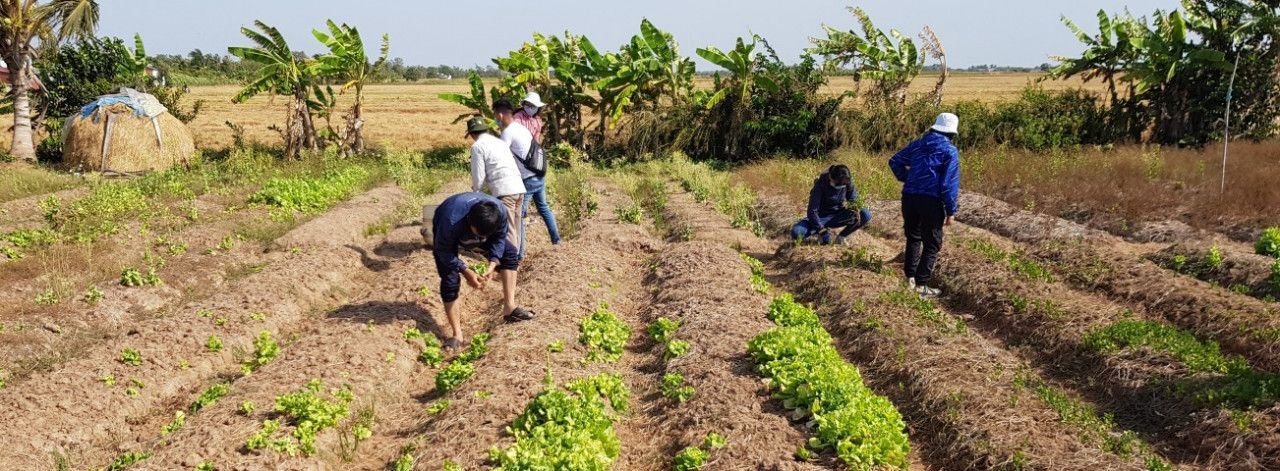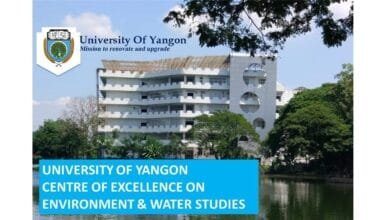
In the third week of October, Stockholm Environment Institute Asia Center (SEI Asia) hosted and organized an online training on Low Emissions Analysis Platform (LEAP) which is a powerful, versatile software system for integrated energy planning and climate change mitigation assessment. Developed at SEI US, LEAP (originally the Long-range Energy Alternatives Planning System) continues to evolve and improve. LEAP is a transparent and user-friendly tool for energy and climate mitigation planning that has been adopted by thousands of organizations in nearly 190 countries worldwide, including government agencies, academics, nonprofits, consulting companies and energy utilities.
The training is being provided by SEI with funding from the Swedish Government through the Swedish International Development Cooperation Agency (SIDA) under SEI Rapid Response Fund support.
SEI is an international, independent, no-profit research institute whose mission is to bridge science and policy to develop the best science possible to support policy making processes around the world focusing on sustainable development. According to the Deputy Director of the SEI Asia Centre, Chayanis Krittasudthacheewa, the training intends to provide technical capacity building to participants especially for those who are the beginners to learn about the LEAP tool which will be highly useful for the persons especially with the background on energy, energy system or climate change mitigation.
Training was organized 3 hours web meeting per day from 19th to 22nd October. This 4-day workshop training was led by Dr. Jason Veysey, Deputy Director of Energy Modeling Program and Dr. Charlotte Wagner, Scientist of Energy Modeling Program and both are from SEI US Centre. The training included presenting lectures by two lead trainers, introducing exercises and reviewing the results of exercises. Participants had to complete one or two exercises given by each day and the results were reviewed together with the trainers and discussed the followed-up questions of the exercises from the participants’ side.
Around 60 participants joined the training, and the majority was from Myanmar, Thailand, Vietnam, India, and Cambodia and some form others as well. The overview of the workshop was designed to focus on several number of topics designed to introduce the participants to LEAP and certainly provide a good foundation to start to build their familiarly if they want to continue working with the tool for future.
The workshop overview was as follows:
- Day 1: Introduction to LEAP and energy demand modeling
- Day 2: Energy supply and emissions modeling
- Day 3: Cost-benefit analysis and optimization modeling
- Day 4: Linking LEAP and WEAP and other advanced topics
Day 1: Introduction to LEAP and energy demand modeling
When it comes to modelling, there seems to be a technical gap for Myanmar professionals from most of the fields. I hope this technical delivery of LEAP by SEI would be valuable and hope to be adapted in future projects of the country.
U Thein Soe, Independent Consultant from MEI
The first day of the workshop started with the introduction of the program and participants and highlighted lectures was the introduction of the basic orientation to what the LEAP is, what it looks like, start to review some of its capability and get to use LEAP to model energy demand.
Participant’s introduction and sharing expectations
In the participant’s introduction session, each one representative of the majority country introduced him/herself and expressed their expectations from this workshop.
First of all, U Thein Soe, Independent consultant from Myanmar Environmental Institute (MEI), introduced and he said that most of the Myanmar Professionals have a technical gap about modelling in many fields of the study and hoping this technical delivery of LEAP by SEI will be valuable and hope to be adapted in future projects of the country.
Secondly, Mr Kaushal Chapagain originally form Nepal and studying as a Doctoral Student on Water Engineering and Management Program at Asian Institute of Technology (AIT) in Thailand mentioned that his study thesis is about the Framework for the assessment of water-energy-food nexus under the climate change impacts. For that, he is trying to use WEAP and LEAP model to integrate and looking into different scenarios at the basin scale. So, he is really hoping that from this training he will be able to understand about the LEAP model and how to integrate LEAP with WEAP. He also said, “this would be really interesting for me to learn a lot of form energy perspectives.”
Thirdly, a doctor from Vietnam introduced that he is currently working on Disaster Risk Management particularly flood risk management in Ho Chi Minh City. What he mentioned was “I am particularly interested in how to make sufficient on what we get from modelling using the LEAP to understand the connection between natural resources in NG.”
Finally, Mr. Sam Chanthy from Cambodia shared that this is his first time to learn LEAP although he has known about this for many years but never have an opportunity to learn through formal training like this before. He hoped to learn more and appreciated SEI Asia and US Centers for organizing this training.
Introductory lecture to LEAP by Dr. Charlotte included some of its key features such as LEAP interface, terminology, Structure and History of it. LEAP is not a model but a tool for creating models which focuses mainly on climate mitigation, energy, and air pollution. Originally LEAP was developed as a mainframe tool primarily for energy modelling in the early 1980s and through the four decades of subsequence development, in 2020 published major new version that includes advanced optimization modelling, result mapping, indoor air pollution assessment. 

Then, Dr. Jason presented the key theory on Modelling Energy Demand such as Disaggregation Methods when inputting the energy activities, how to input the data and review the results directly within LEAP software and finally gave the clear instructions to the participants for the homework exercise 1 on Energy Demand Modelling.
Day 2: Energy supply and emissions modeling
On second day, before starting the main session, the trainers reviewed the results of the day 1 exercises and discussed the follow up questions from the participants altogether. After that, a highlight of the day 2 core theory on the supply system; resource branches, various transformation module and a concept of Integrated Benefits Calculator (IBC) which is non-energy sector emissions analysis modelling in LEAP, how to create a baseline scenarios and mitigation scenarios for emissions modelling, etc were presented by Dr. Charlotte and Dr. Jason respectively. Then, Dr. Jason continued the explanation and demonstration relevant to the Day 2 exercise which is about the Energy Supply and Emissions Modelling.


Day 3: Cost-benefit analysis and optimization modeling
On the third day, as usual after reviewing the results of the day 2 exercises and discussing the follow up questions from the participants altogether, one of the key functions of the LEAP; Integrated Cost-Benefit Analysis was introduced. In this session, the trainers explained the concept of how to enable cost modelling in LEAP and what are the input needed for this. Besides, they explained the optimization modelling with LEAP and compare it with a tool called NEMO (Next Energy Modelling system for Optimization), an open-source tool LEAP uses for optimization modelling developed by SEI.


Day 4: Linking LEAP and WEAP and other advanced topics
The last day of the workshop was more about the overview of LEAP users in Southeast Asia, sharing resources and publications, how to link LEAP with other sector tools rather than about the LEAP itself. At the start of the session, after debriefing the results, questions, and clarifications of previous day’s exercises 3 and 4 with the participants, the trainers shared overview of LEAP users and publications in Southeast Asia region. A brief session of linking LEAP and WEAP (Water Evaluation and Planning system) with demonstration of some examples how to connect energy and water sectors. Finally, the session was wrapped up with sharing the Advanced Topics including introduction to other LEAP features for those who want to explore more about data manipulation, custom input and output variables, additional methods for energy demand modeling, additional result reporting options etc.
Wrap Up session
As a final note, Dr. Jason said despite the short amount of time and a lot of information to digest, he hoped that participants could get the concrete foundation of the tool and encouraged the participants to continue learning the tool to be able to master it and he also hoped that participants could apply the knowledge from this intensive training in their future projects. Chayanis also gave a thankful speech to trainers for valuable knowledge sharing and training materials and to participants for joining actively and for their great and interesting questions throughout the training.
At the end of the training, everyone showed appreciation to all the trainers for sharing key information to start using LEAP and to organizers for the impressive and perfect training. It was a most knowledgeable, insightful and practical training.










